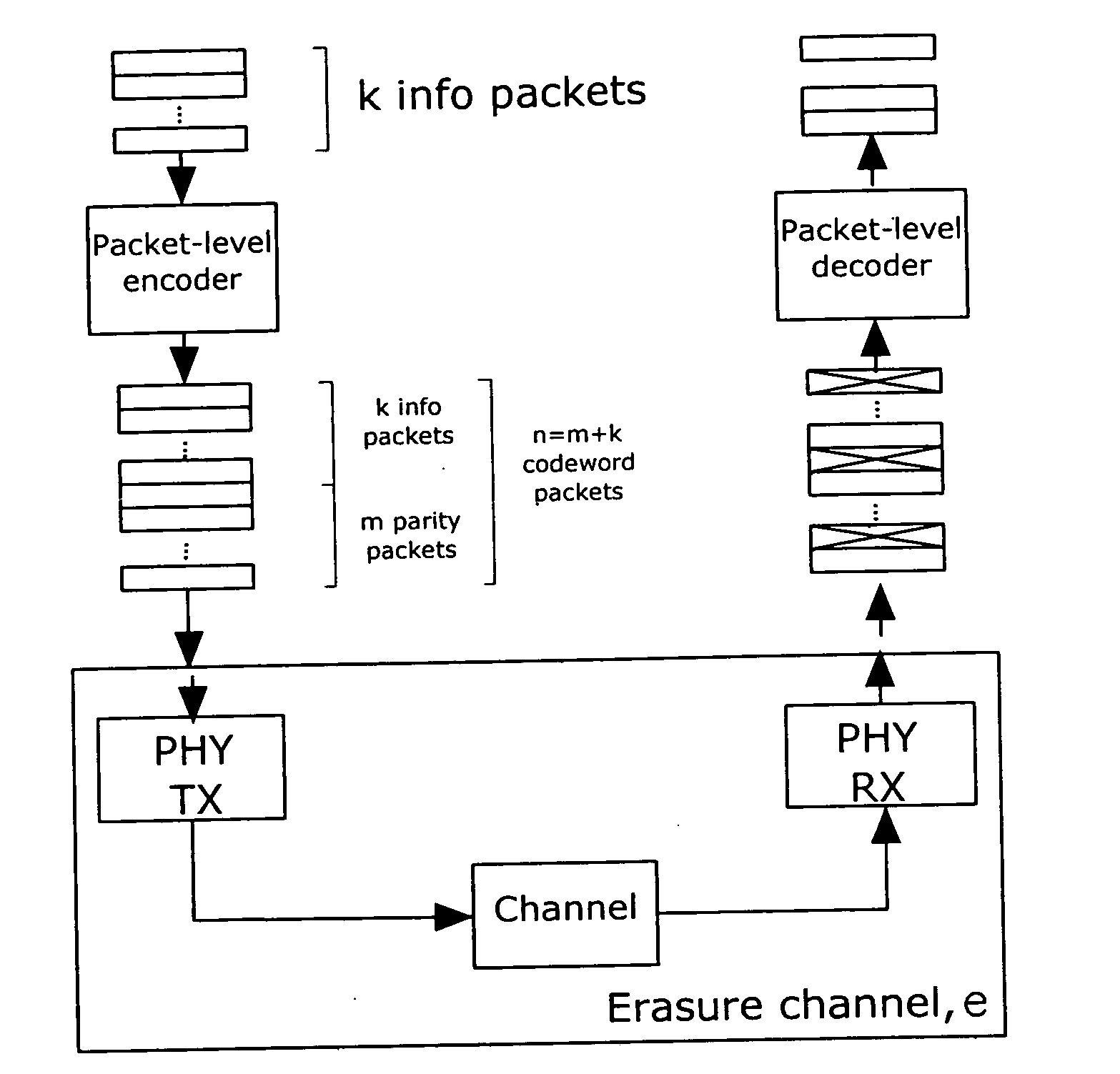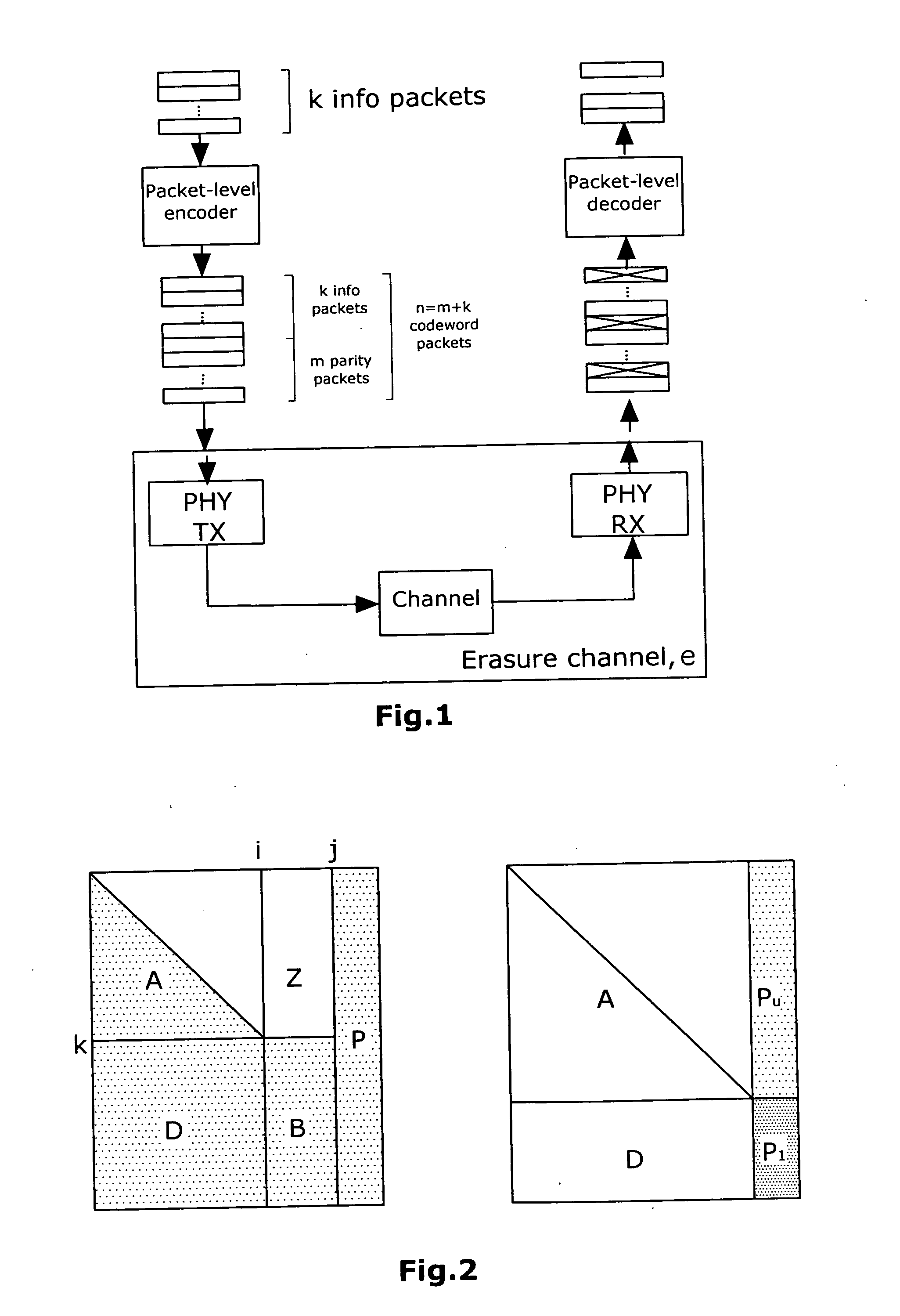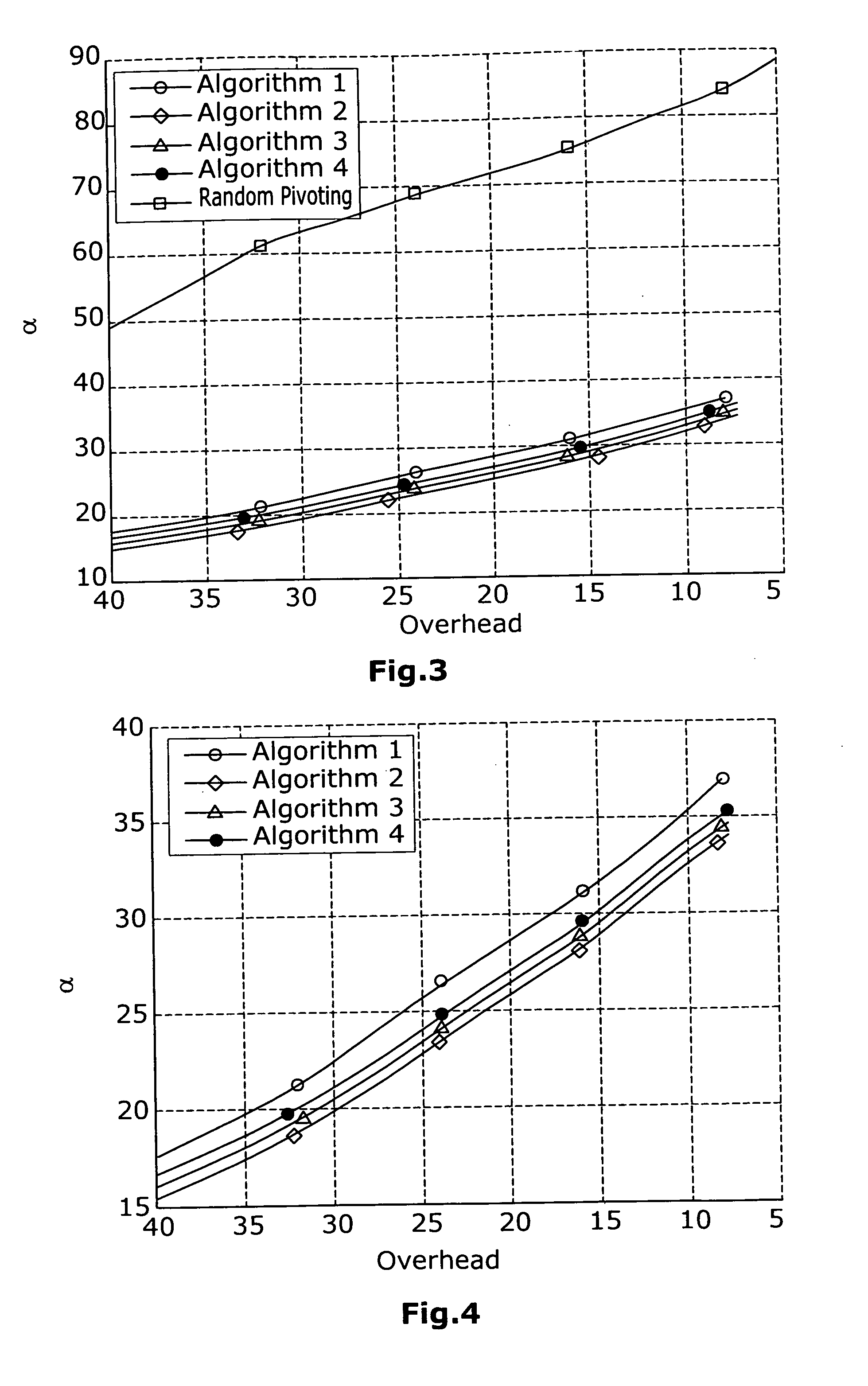Method for recovery of lost and/or corrupted data
a data recovery and corrupted technology, applied in the field of recovery of lost and/or corrupted data, can solve the problems of large complexity, high data rate can often not be reached, incorrectly received or considered lost packets, etc., to improve the quality of recovery rate, improve service quality, and increase the abortion parameter
- Summary
- Abstract
- Description
- Claims
- Application Information
AI Technical Summary
Benefits of technology
Problems solved by technology
Method used
Image
Examples
Embodiment Construction
[0061]From FIG. 2, as already described, it is evident in which manner the sub-matrix A has to be enlarged by shifting columns of the sub-matrix B into the sub-matrix P. The right-hand side of FIG. 2 represents the matrix H after the sub-matrix D has been zeroed out so that the Gaussian elimination method has to be applied only to the sub-matrix P1.
[0062]FIGS. 3 and 4 show the pivoting value α, namely the block length of the sub-matrix P, i.e. the number of columns which have been displaced, in dependence on the overhead. The overhead herein is dependent on the channel erasure rate. The average pivot size a was simulated for various overheads in one hundred different tests. Herein, there was used an Irregular Repeat Accumulate (IRA) (2048, 1024) Code. In the best case, such a code can tolerate 1024 erasures. Thus, the overhead can be expressed as: Overhead=1024−actual number of erasures in the codeword.
[0063]The simulation results for the first four inventive algorithms are visualiz...
PUM
 Login to View More
Login to View More Abstract
Description
Claims
Application Information
 Login to View More
Login to View More - R&D
- Intellectual Property
- Life Sciences
- Materials
- Tech Scout
- Unparalleled Data Quality
- Higher Quality Content
- 60% Fewer Hallucinations
Browse by: Latest US Patents, China's latest patents, Technical Efficacy Thesaurus, Application Domain, Technology Topic, Popular Technical Reports.
© 2025 PatSnap. All rights reserved.Legal|Privacy policy|Modern Slavery Act Transparency Statement|Sitemap|About US| Contact US: help@patsnap.com



